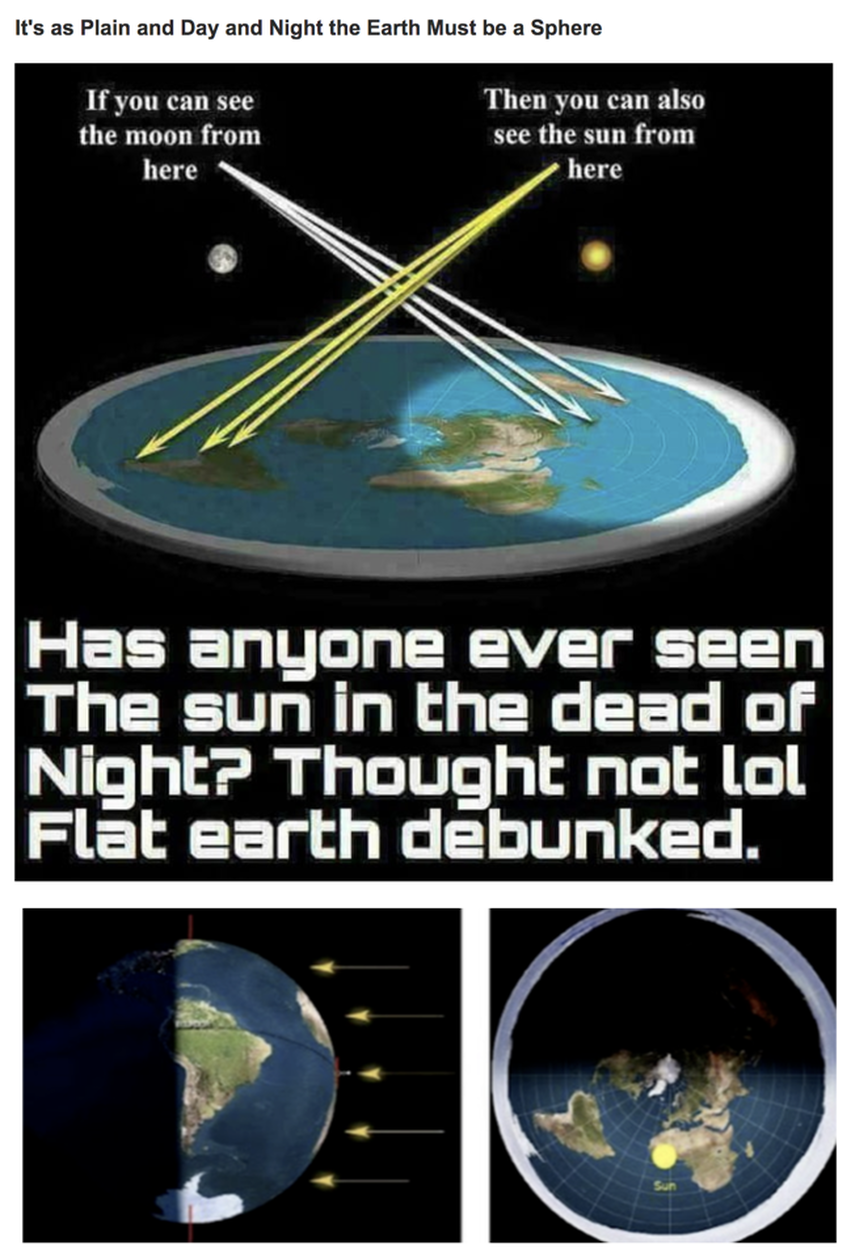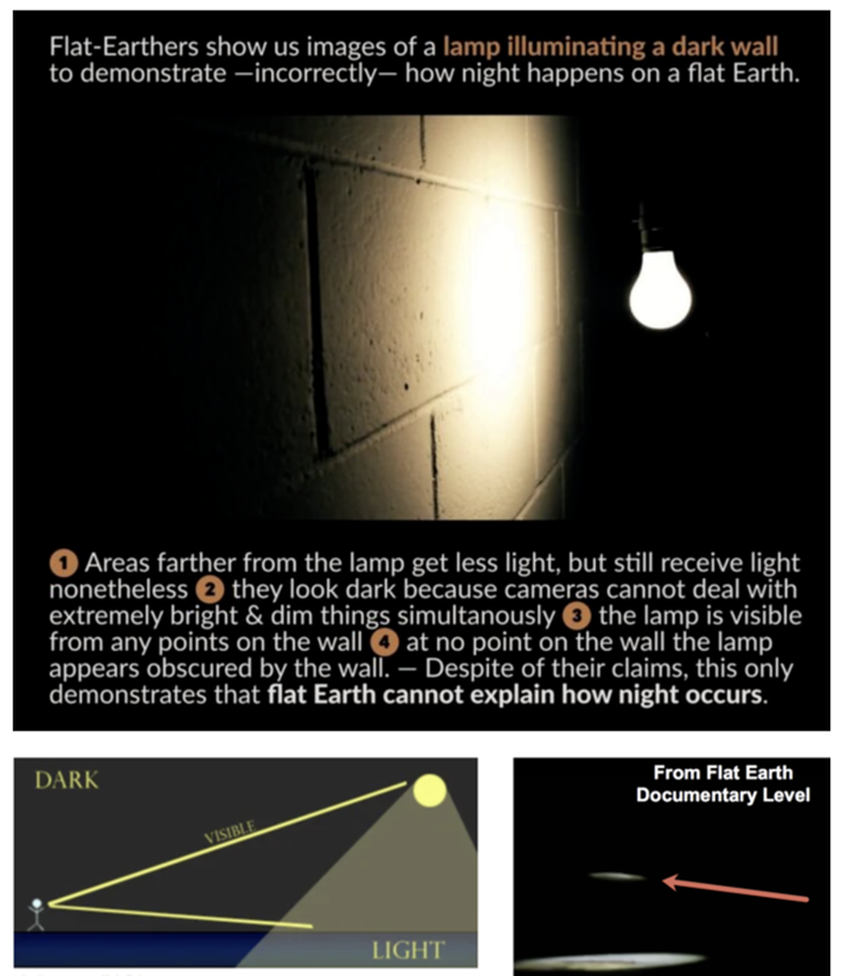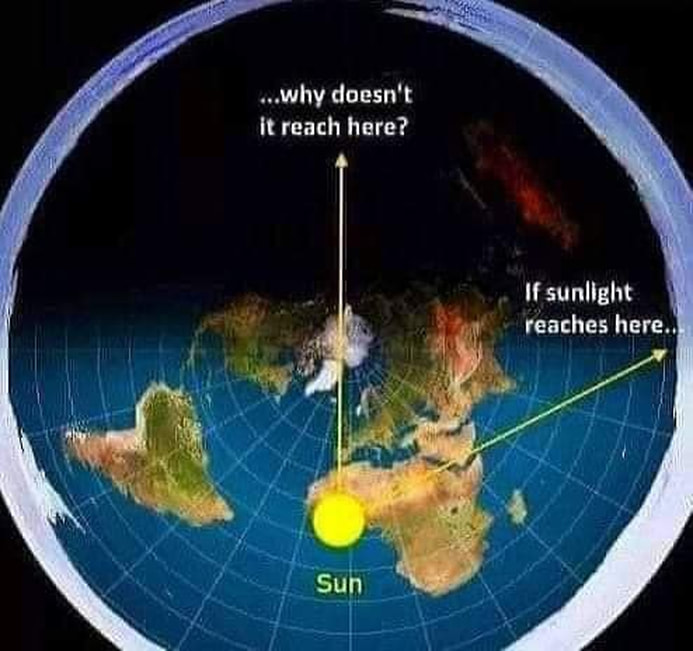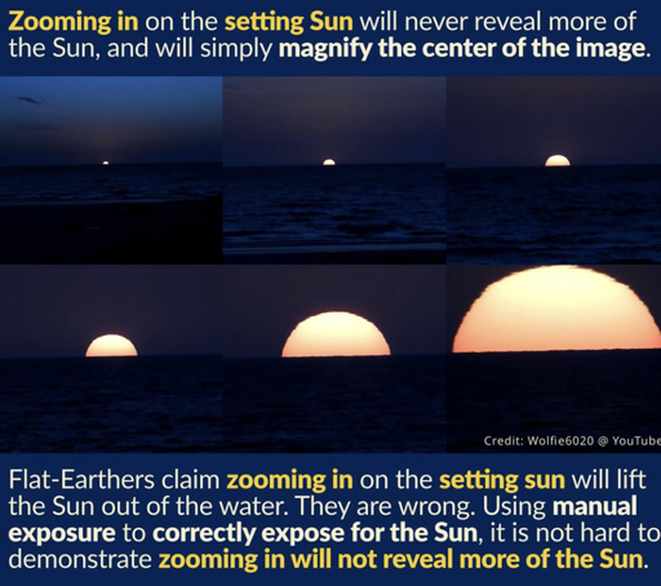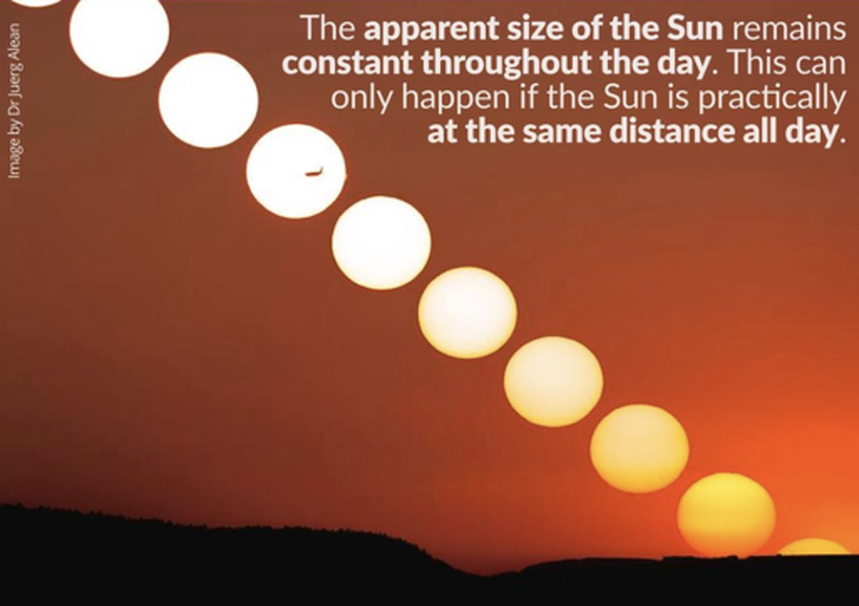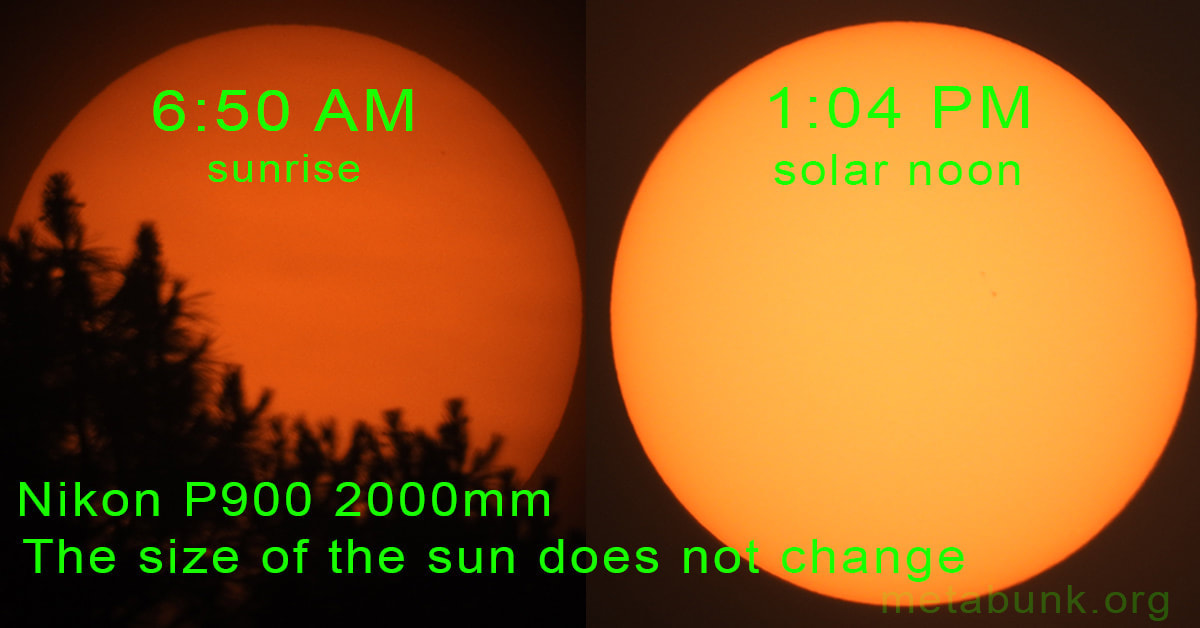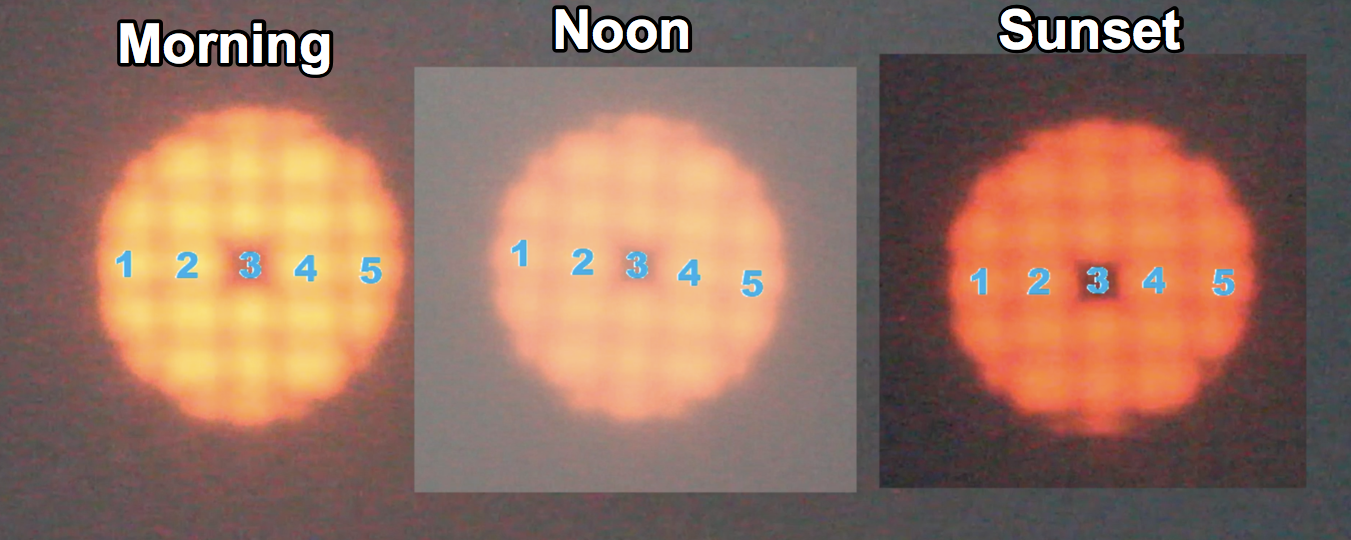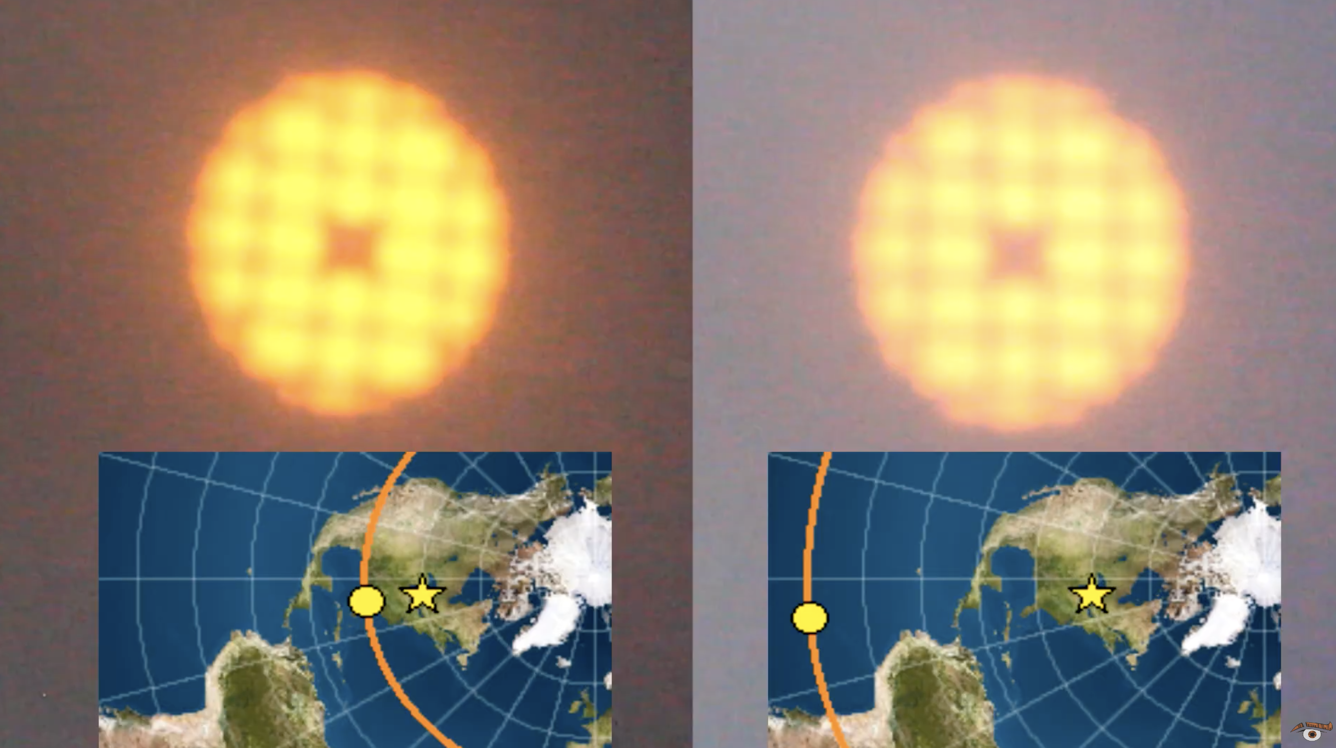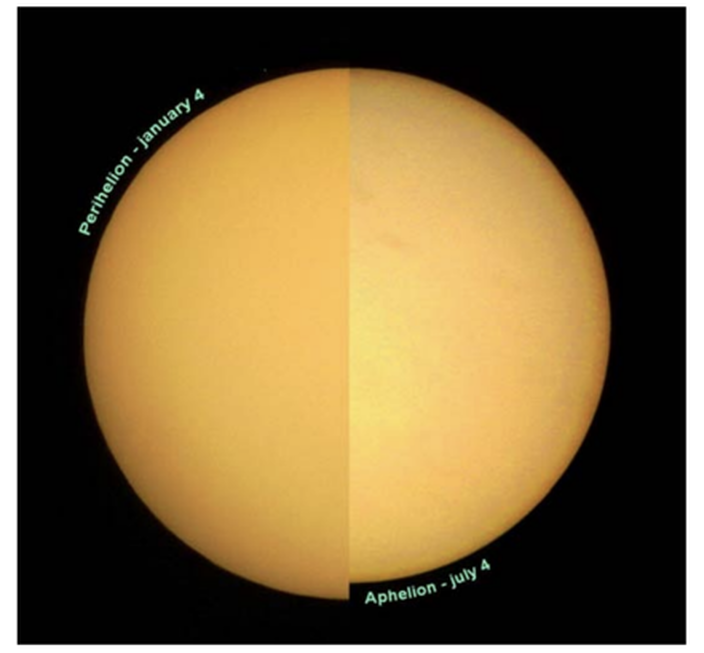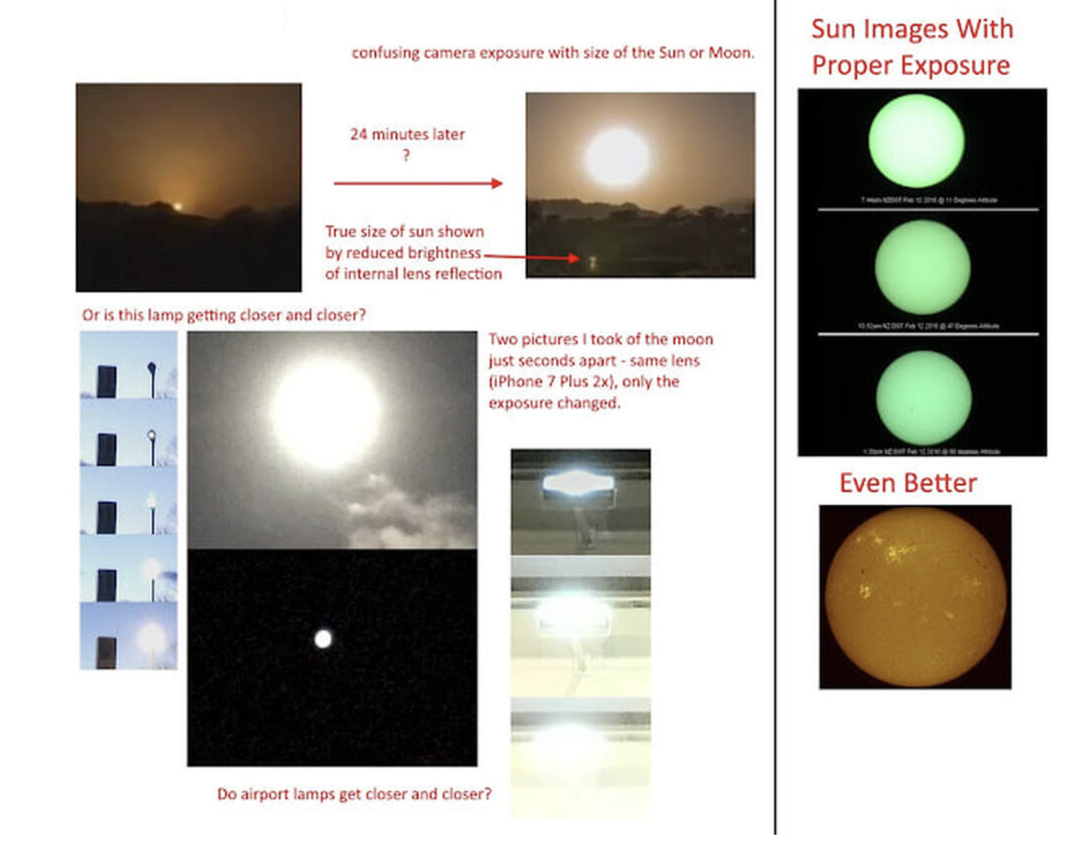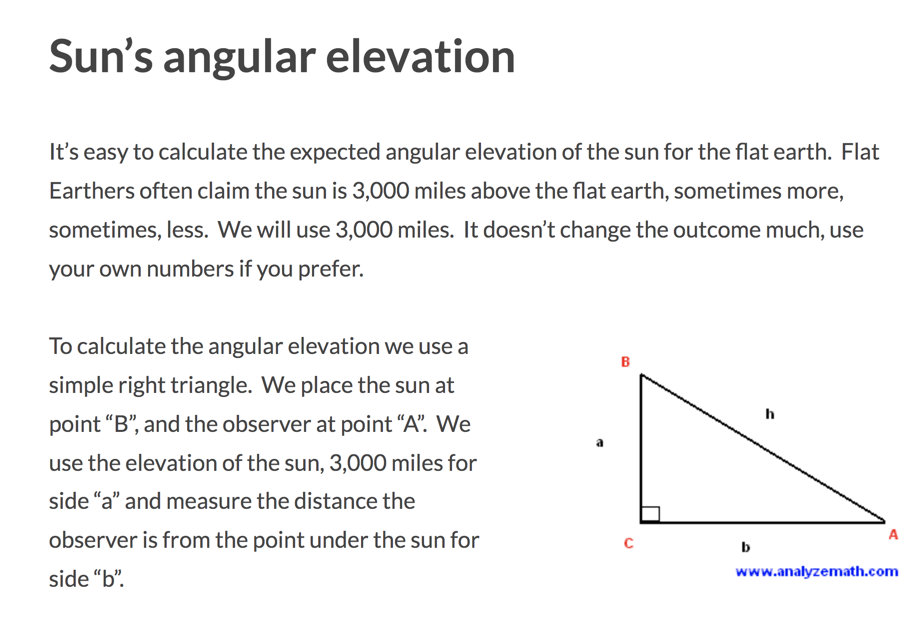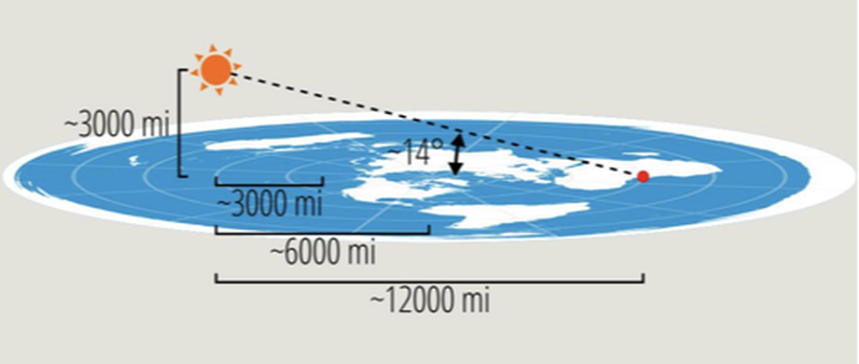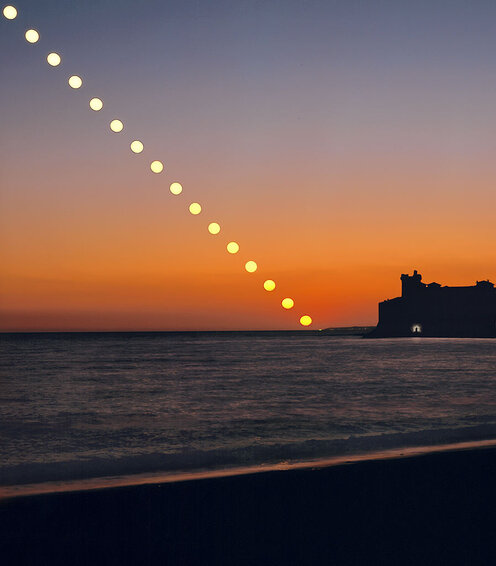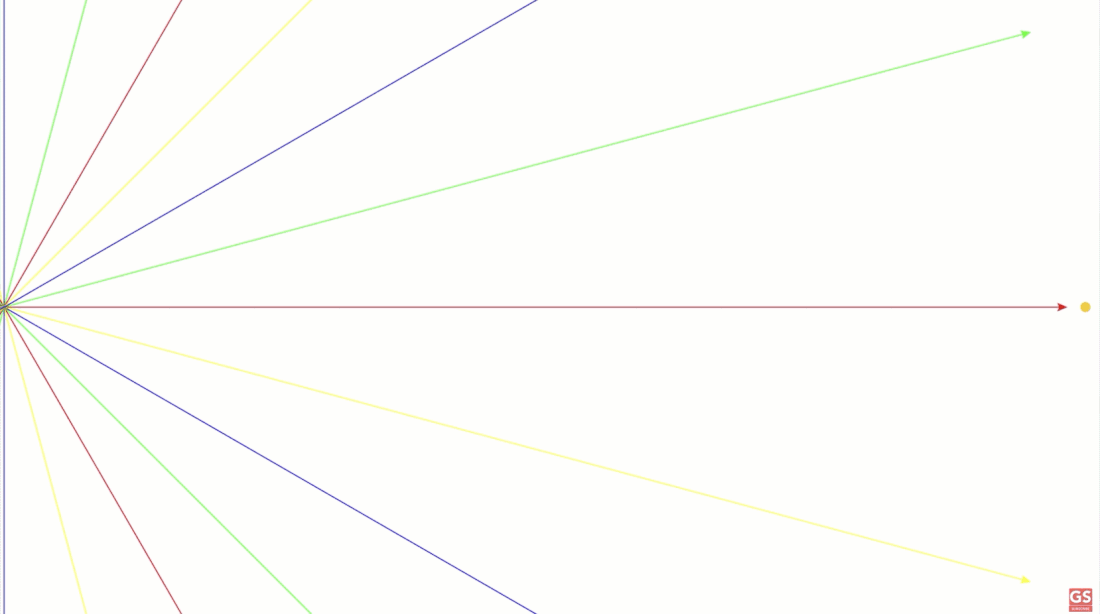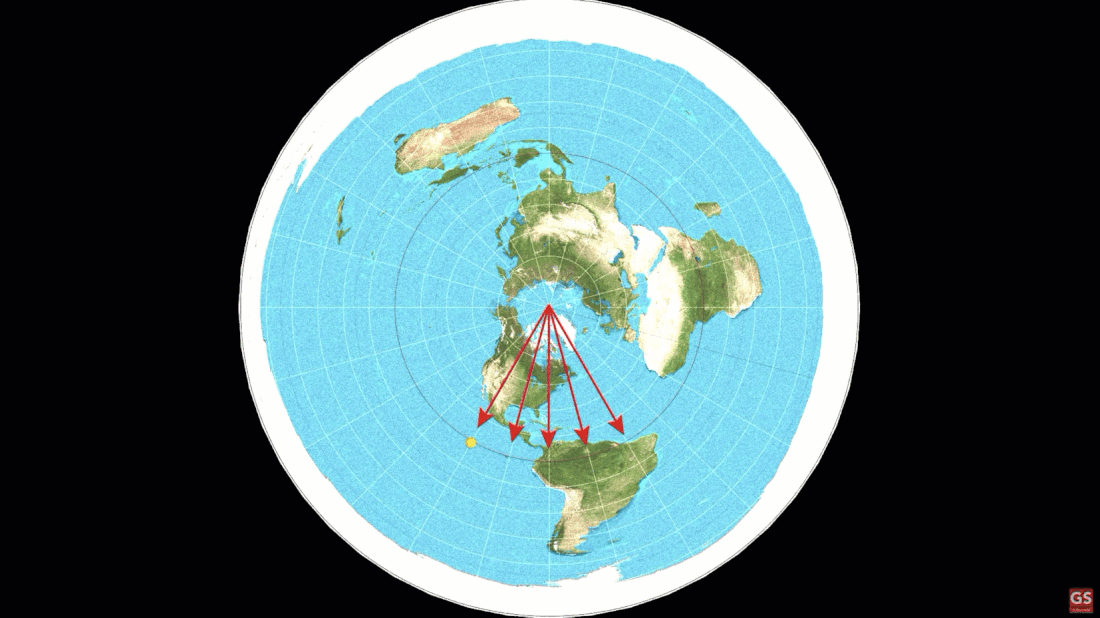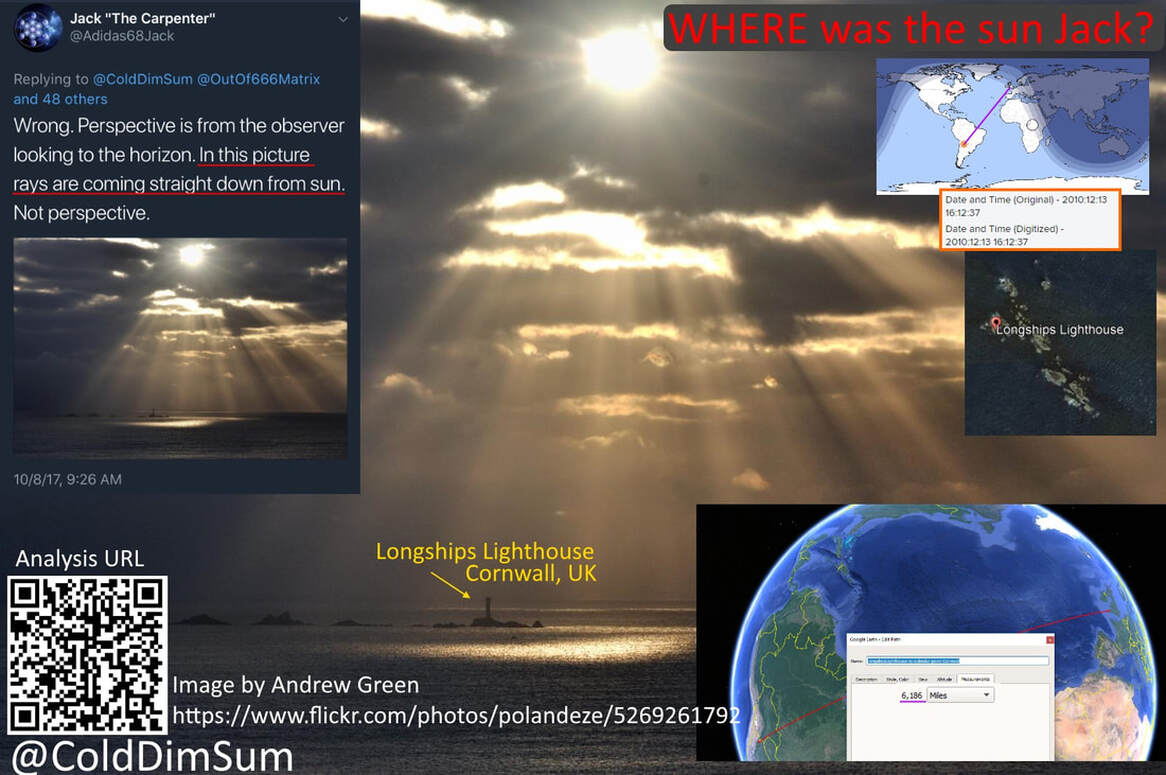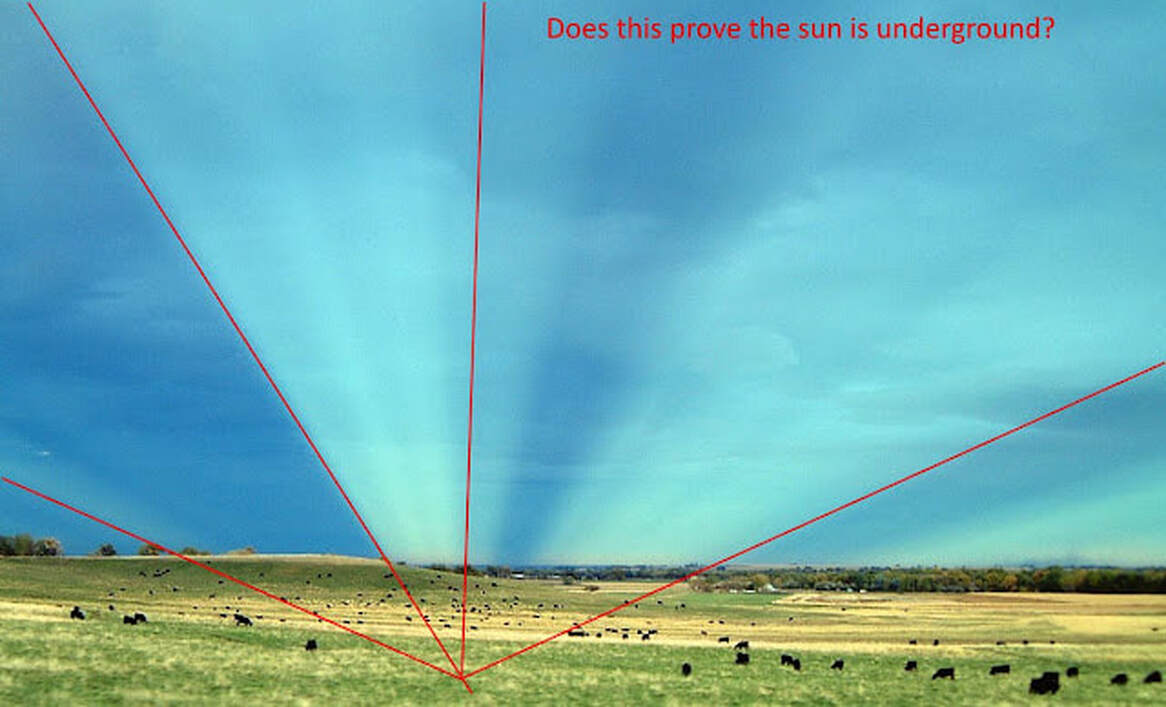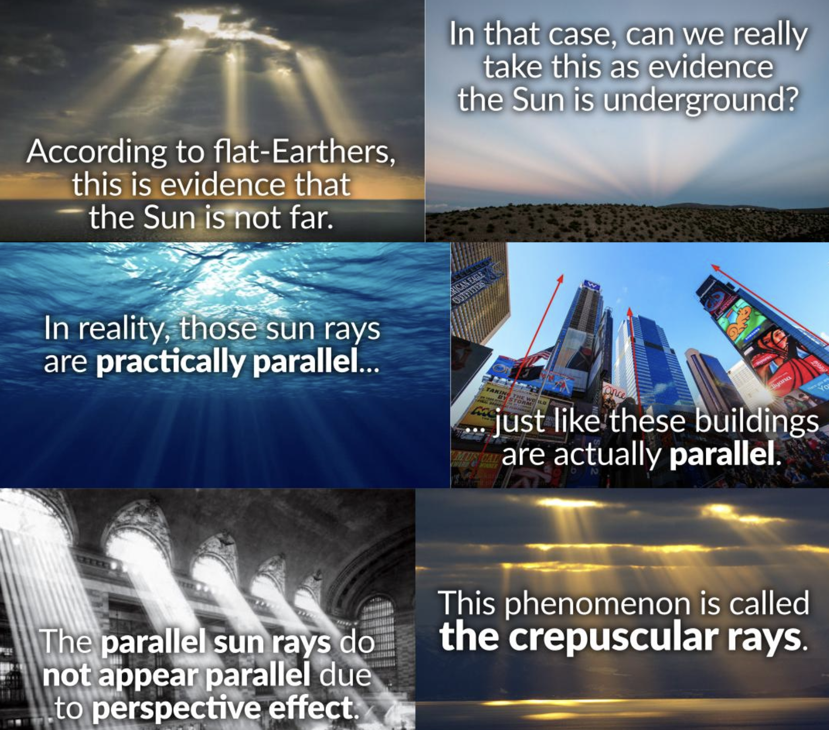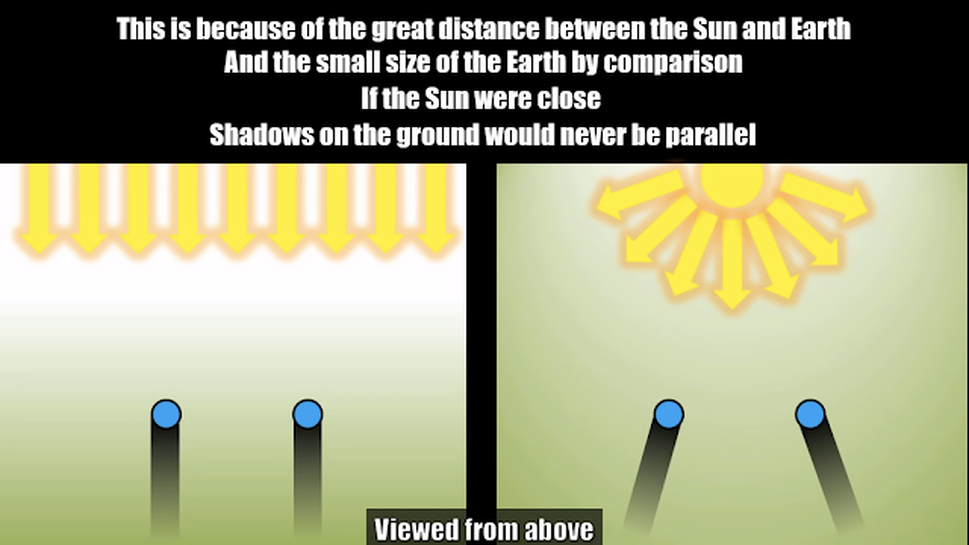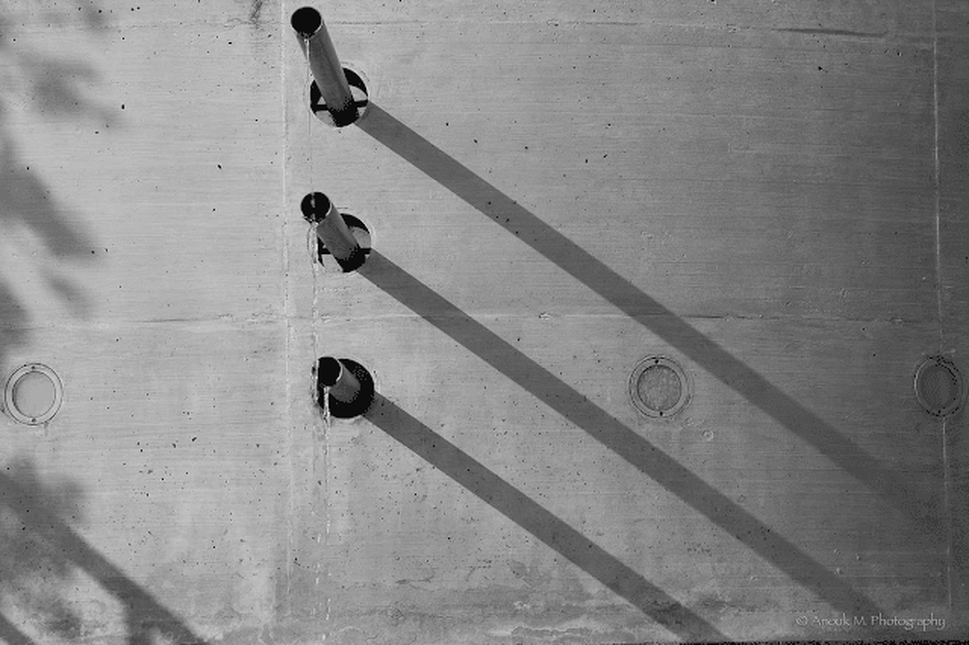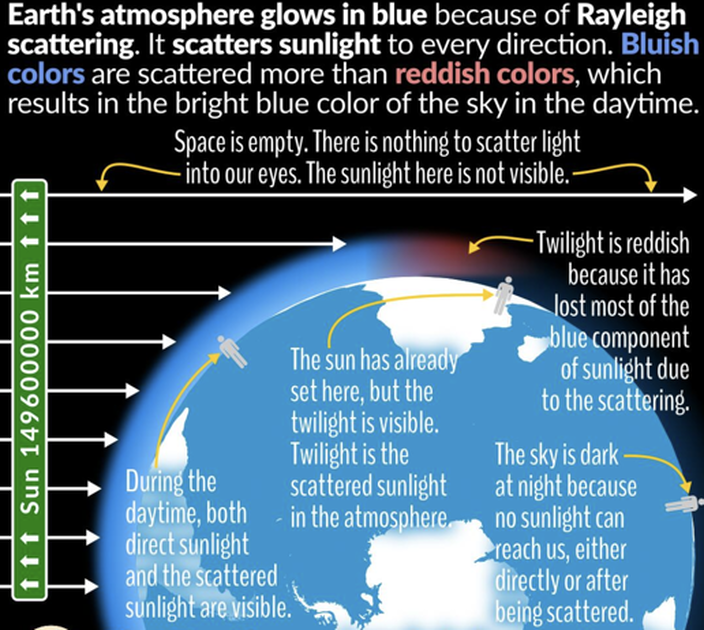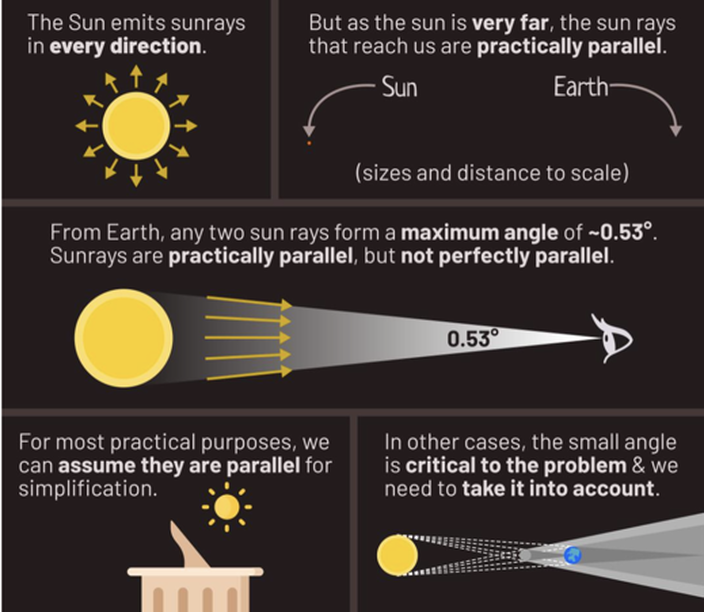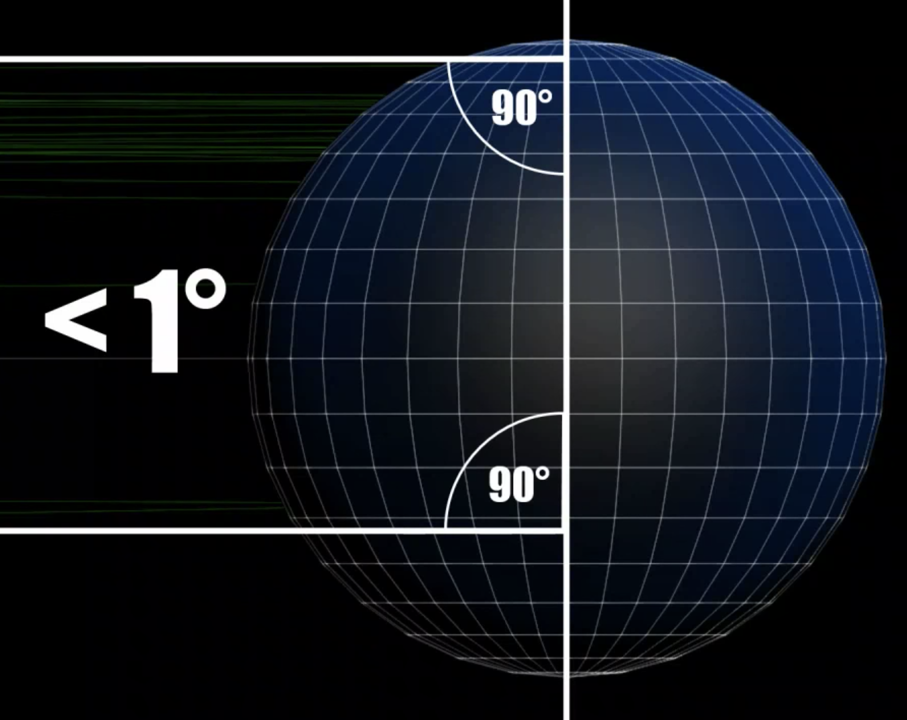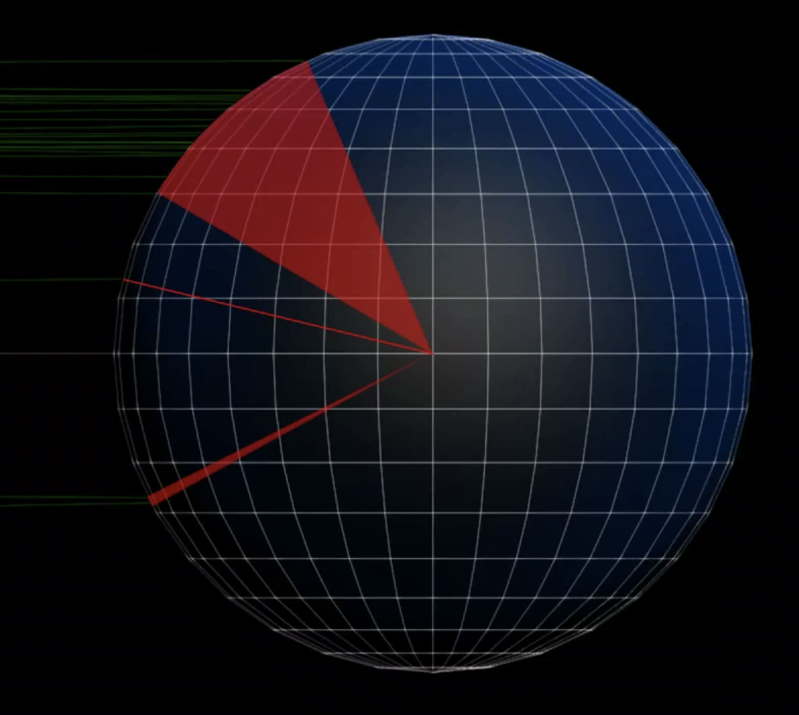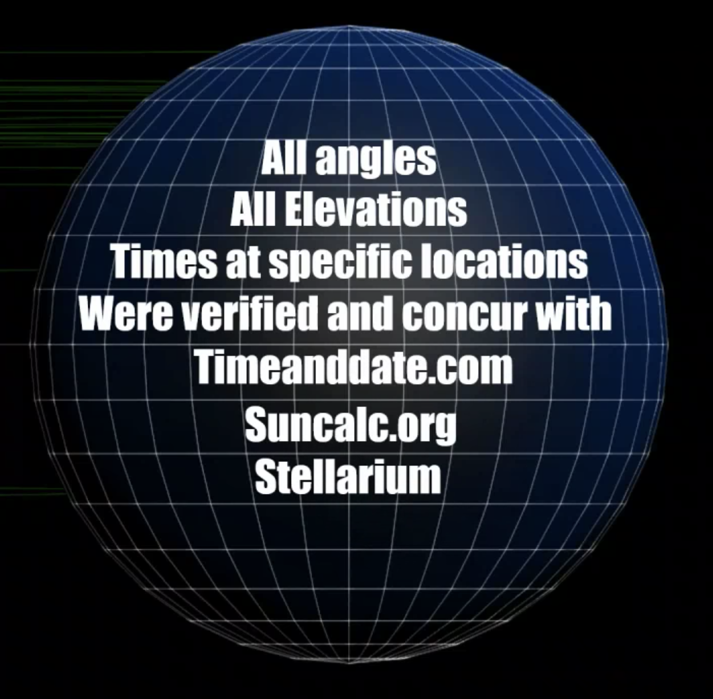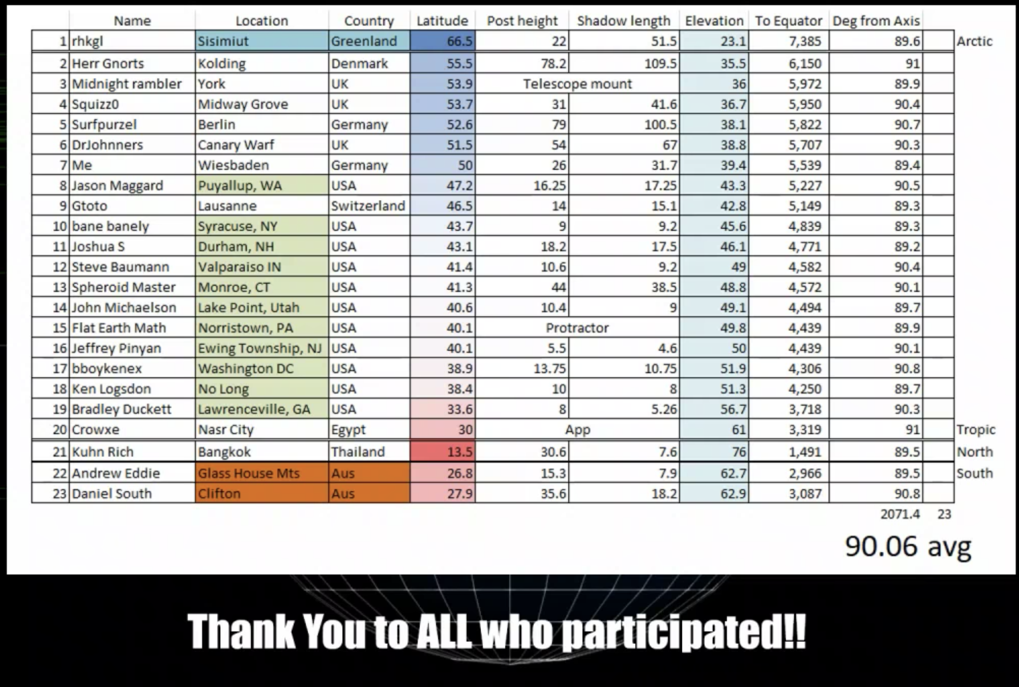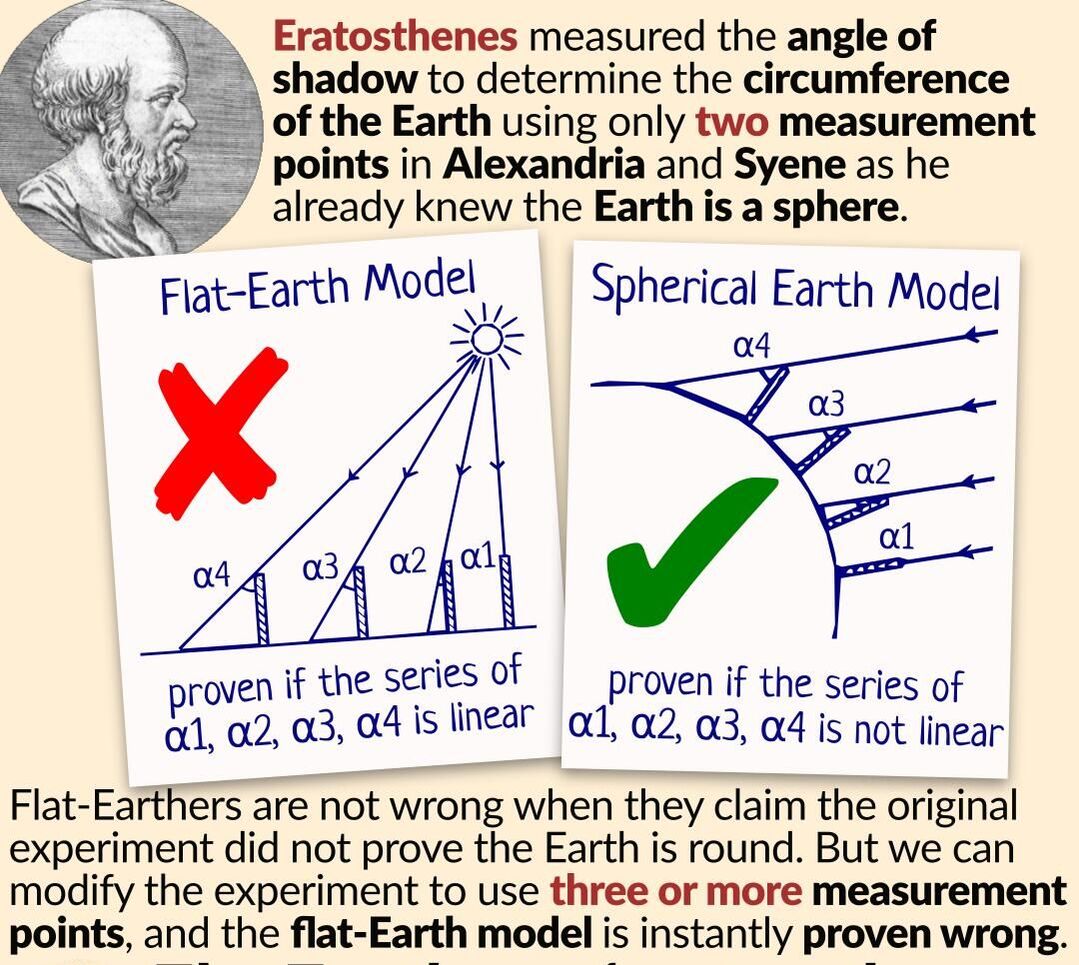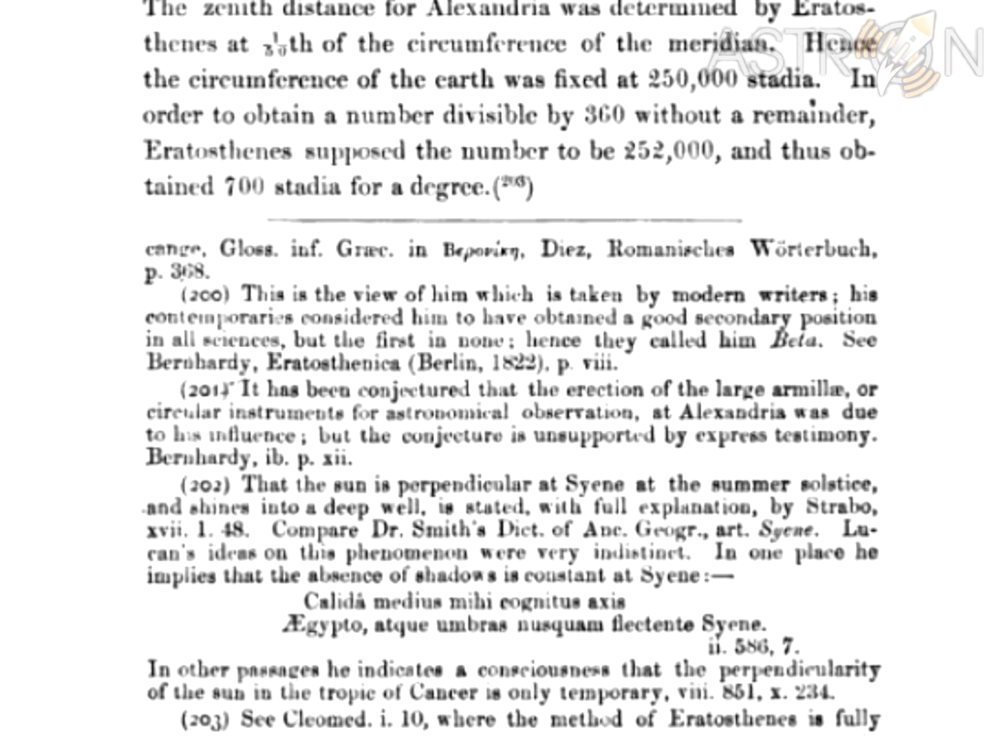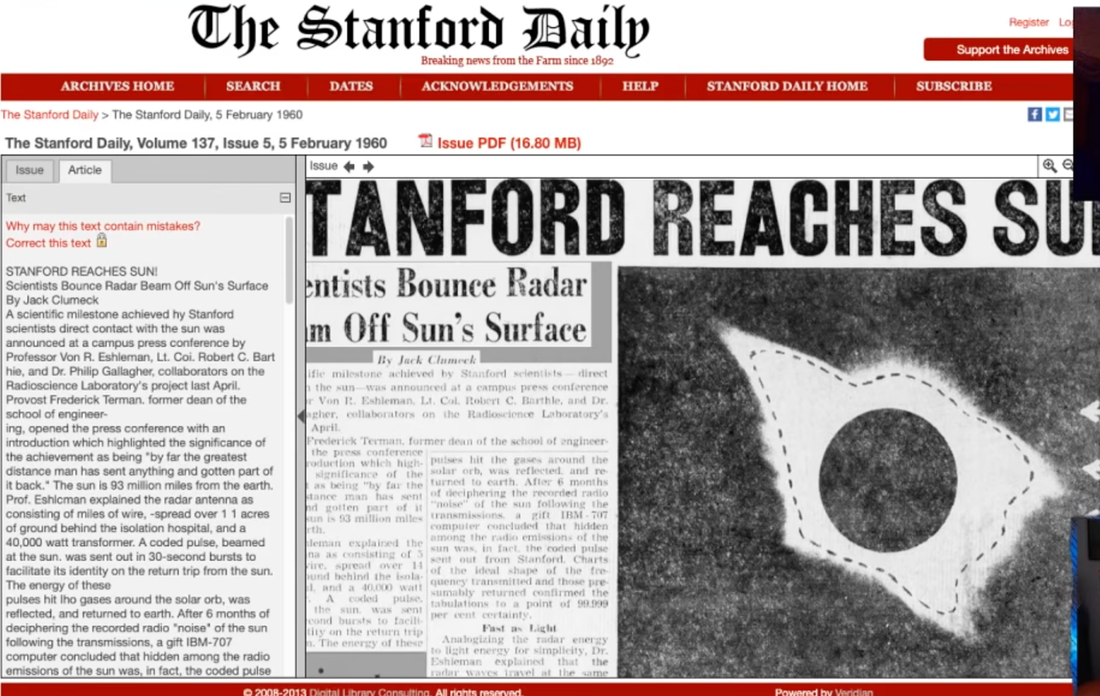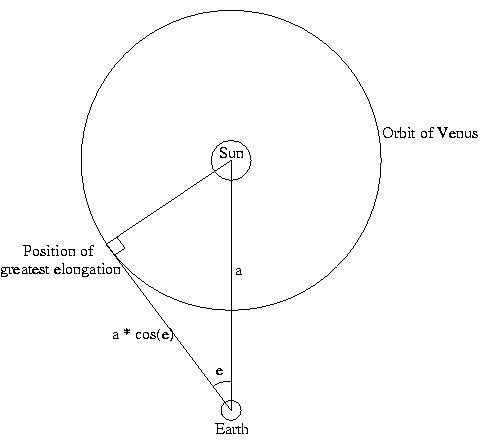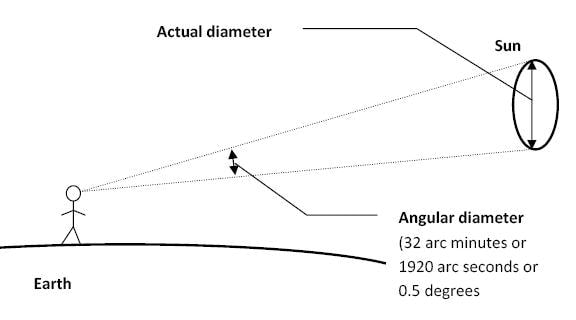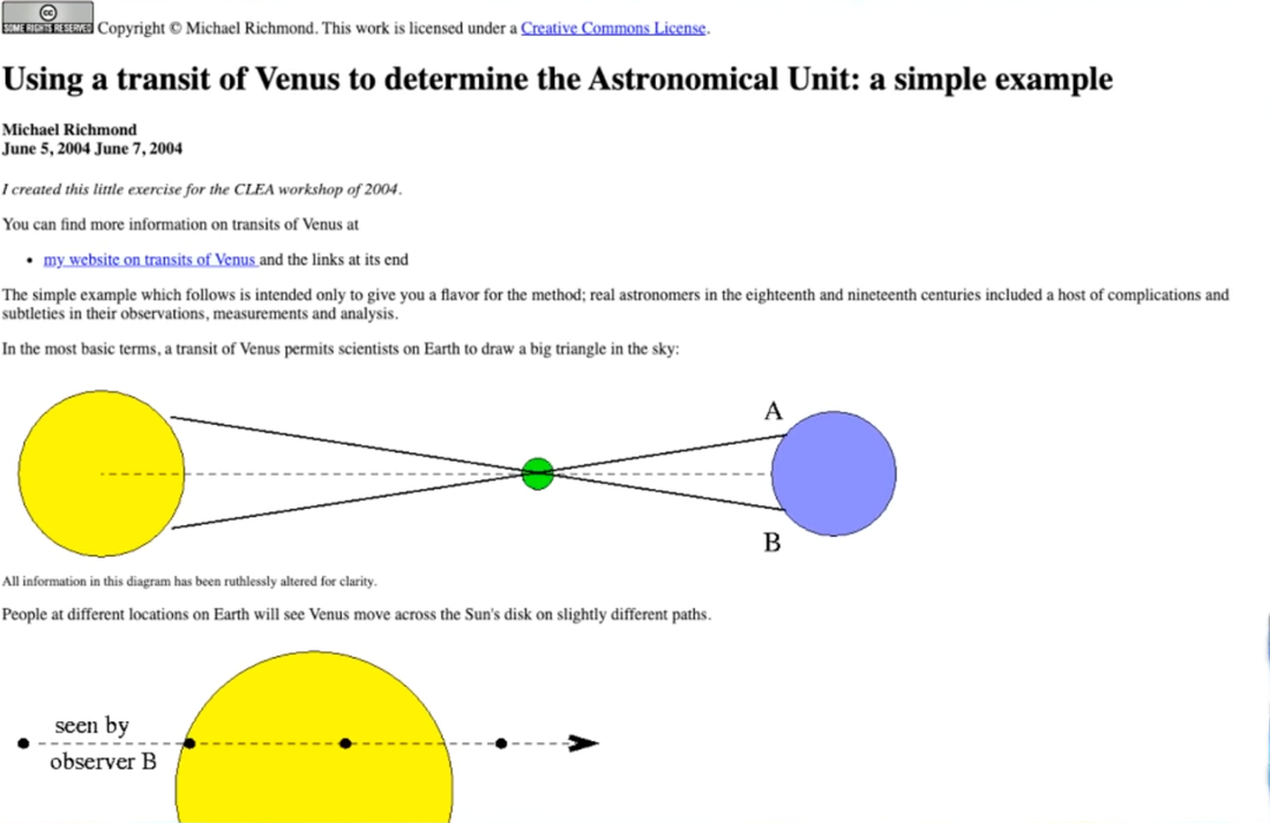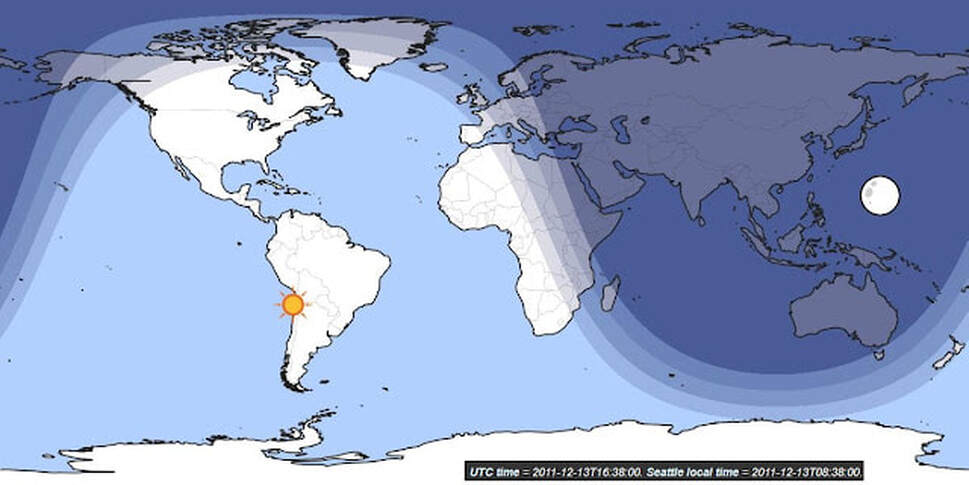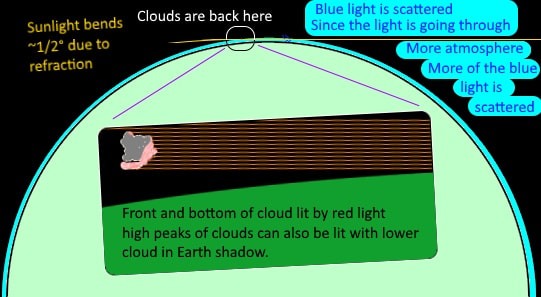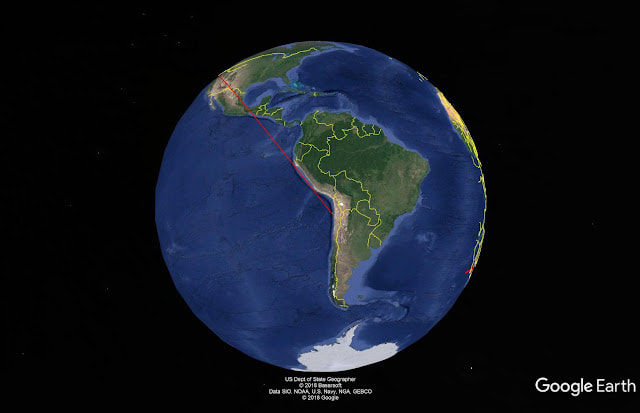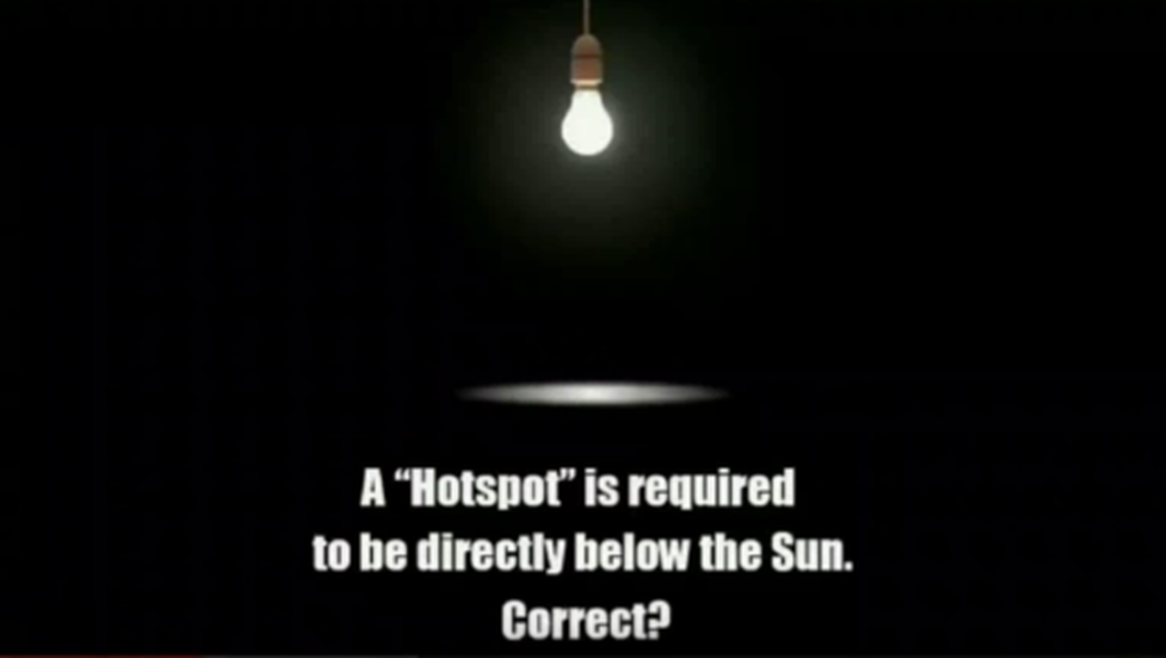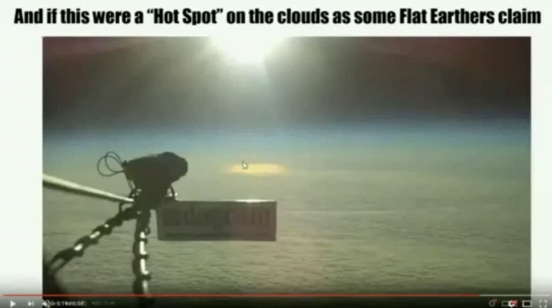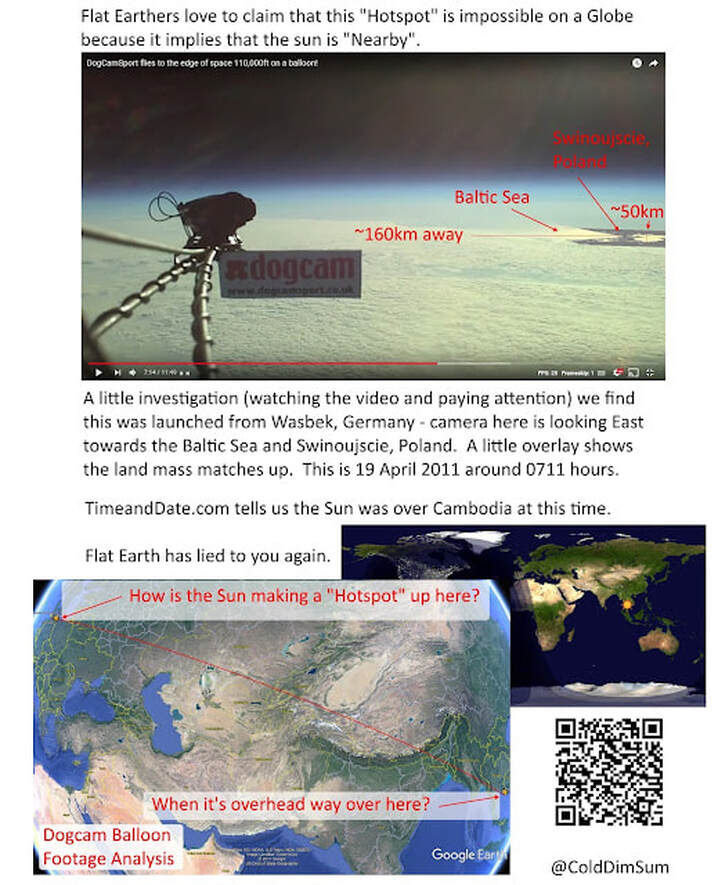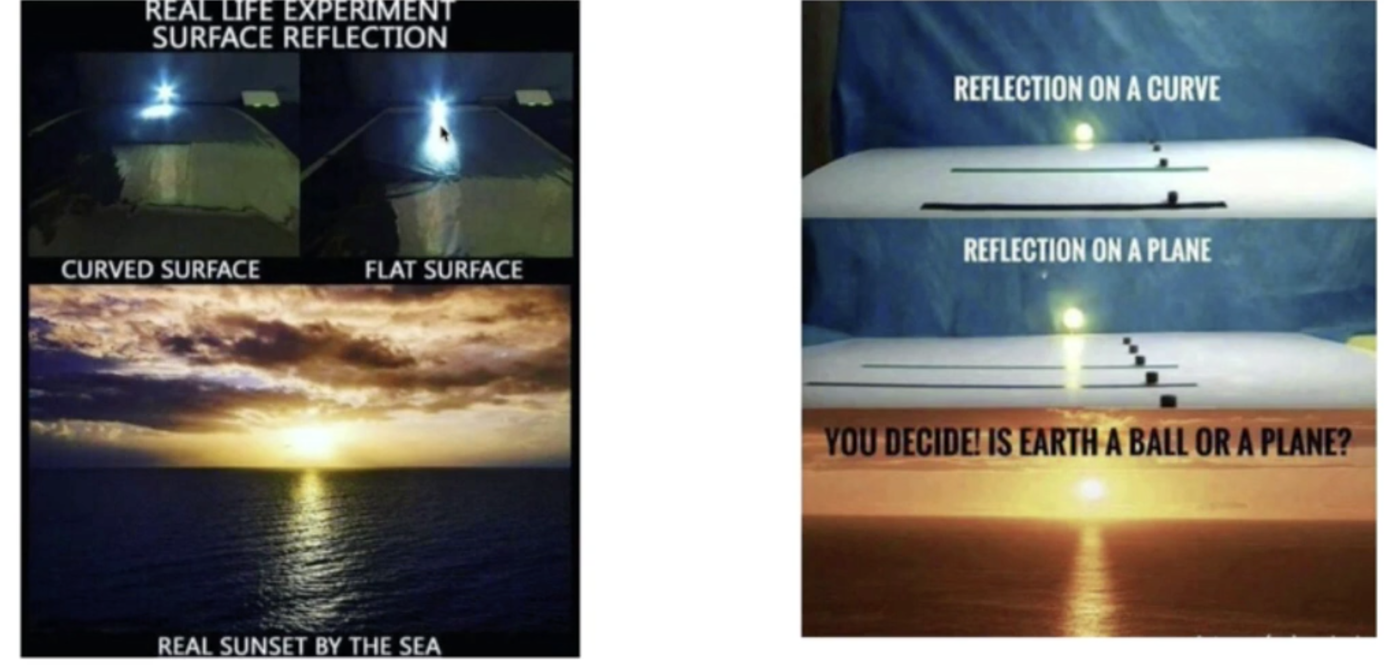Sun - Day/Night and Seasons
Only spherical earth explains exact light/dark
Determining the Distance to the Sun from the Transit of Venus
Sunset refraction from spherical atmosphere
Seasons perfectly Explained
Equinox challenge perfectly explained
'Flat-Earth “Perspective” is not Real-World Perspective' with the SUN
The Direction to the Sun vs the Position of the Sun
Anticrepuscular rays (and crepuscular rays)
Rayleigh Scattering
The Length of Daytime and Nights in the Flat Earth Model
Sunset at Burj Khalifa
Synodic Day vs Sidereal Day
15% shift in sun during the day, everywhere on earth**
Sundials
The Eratosthenes Experiment: Proving the Earth is Spherical (3 or more)
https://refutandotp.blogspot.com/
How is it possible that nobody notices the Sun racing overhead in the Winter?
What we actually observe is that it moves at a constant 15° per hour.
Only spherical earth explains exact light/dark
Determining the Distance to the Sun from the Transit of Venus
Sunset refraction from spherical atmosphere
Seasons perfectly Explained
Equinox challenge perfectly explained
'Flat-Earth “Perspective” is not Real-World Perspective' with the SUN
The Direction to the Sun vs the Position of the Sun
Anticrepuscular rays (and crepuscular rays)
Rayleigh Scattering
The Length of Daytime and Nights in the Flat Earth Model
Sunset at Burj Khalifa
Synodic Day vs Sidereal Day
15% shift in sun during the day, everywhere on earth**
Sundials
The Eratosthenes Experiment: Proving the Earth is Spherical (3 or more)
https://refutandotp.blogspot.com/
How is it possible that nobody notices the Sun racing overhead in the Winter?
What we actually observe is that it moves at a constant 15° per hour.
The light of the flat-earthen sun has a strange behavior: It is shaped like a semicircle so that in this way it illuminates half of the flat earth. In addition, the intensity of light that emanates stops abruptly, in such a way that those who can see the sun in all its splendor if they go a few kilometers away will suddenly be covered in dense darkness. No light can behave like this unless the sun has a screen with that shape and if so, we would not see the sun set behind the horizon, but we would see a curtain that appears over it as it moves away until it completely covers it.
The Existence of Timezones Debunks Flat Earth
The time in Bradenton, Fl, at the moment these words are written, is 12:00pm. The sun is in the middle of the sky (though it’s hard to see with the current cloud coverage).
In Beijing, it’s 12:00am, midnight, and the sun is nowhere to be found.
In Adelaide, Australia, it is 1:30am. More than 13 hours ahead. There, the sunset is long gone – so much so, that it’s soon going to rise up again in the beginning of a new day.
This can only be explained if the world is round, and rotating around its own axis. At a certain point when the sun is shining on one part of the Earth, the opposite side is dark, and vise versa. That allows for time differences and timezones, specifically ones that are larger than 12 hours.
The time in Bradenton, Fl, at the moment these words are written, is 12:00pm. The sun is in the middle of the sky (though it’s hard to see with the current cloud coverage).
In Beijing, it’s 12:00am, midnight, and the sun is nowhere to be found.
In Adelaide, Australia, it is 1:30am. More than 13 hours ahead. There, the sunset is long gone – so much so, that it’s soon going to rise up again in the beginning of a new day.
This can only be explained if the world is round, and rotating around its own axis. At a certain point when the sun is shining on one part of the Earth, the opposite side is dark, and vise versa. That allows for time differences and timezones, specifically ones that are larger than 12 hours.
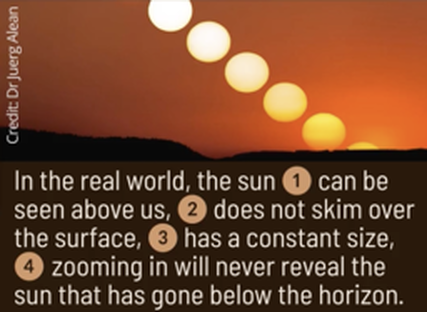
The Sun - A Flat Earth Black Swan
If the sun is small and local, according to the laws of perspective, it’s angular size must vary dramatically throughout the day. The sun’s angular size hardly varies at all throughout the day. Therefore, the sun cannot be small and local.
If the sun is small and local, according to the laws of perspective, it’s angular size must vary dramatically throughout the day. The sun’s angular size hardly varies at all throughout the day. Therefore, the sun cannot be small and local.
.053 average angular size
This makes sense if the sun is the size asserted at the distance asserted, we would not expect to see any shift in angular size as predicted by the law of perspective.
The law of perspective being α= 2*arctan(g/2R)
α being the angular size of the object,
g being the actual size of the object
And R being the distance to the object
Observations we take in reality confirm what we would expect to see in a distant sun. These observations with sly Spokane coincide with the size and shape of our earth. These observations can be observed, tested and repeated.
NOTE: The sun does not get wider but can squeezed vertically at sunset do to refraction. It's width is constant. Note that as the sun approaches the horizon, it gets also pushed up. At the end the real sun has already set while it's image is just touching the horizon, somewhat depending on refraction of course. On standard refraction the apparent angular lift at the horizon is about 0.5°, which is about the angular size of the sun.
This makes sense if the sun is the size asserted at the distance asserted, we would not expect to see any shift in angular size as predicted by the law of perspective.
The law of perspective being α= 2*arctan(g/2R)
α being the angular size of the object,
g being the actual size of the object
And R being the distance to the object
Observations we take in reality confirm what we would expect to see in a distant sun. These observations with sly Spokane coincide with the size and shape of our earth. These observations can be observed, tested and repeated.
NOTE: The sun does not get wider but can squeezed vertically at sunset do to refraction. It's width is constant. Note that as the sun approaches the horizon, it gets also pushed up. At the end the real sun has already set while it's image is just touching the horizon, somewhat depending on refraction of course. On standard refraction the apparent angular lift at the horizon is about 0.5°, which is about the angular size of the sun.
Unfiltered cameras.
Glare
Contrast
Aperture
Atmosphere filters out a lot of that light and causes it to scatter. A lot less glare at night, so appears smaller. Just due to camera glare.
Manuel Focus
Measure the sun
Solar viewer glasses.
Allows you to see the edge of the sun.
Anyone doing solar size measurements needs to be using solar filters.
Screen patch kits, empirically measure the visual width of the sun.
Whiteout in the center point, to center sun and tape it to the glass.
Glare
Contrast
Aperture
Atmosphere filters out a lot of that light and causes it to scatter. A lot less glare at night, so appears smaller. Just due to camera glare.
Manuel Focus
Measure the sun
Solar viewer glasses.
Allows you to see the edge of the sun.
Anyone doing solar size measurements needs to be using solar filters.
Screen patch kits, empirically measure the visual width of the sun.
Whiteout in the center point, to center sun and tape it to the glass.
The sun does not change size
Some Empirical Facts
The sun does change a tiny bit in apparent size.
During any given day it changes by 0.524° to 0.5418°. But .02° is so minimal that it equals the limits of our angular resolution so we will not see this teeny tiny difference in size.
In the summer it is 4% smaller than winter in diameter, which is also hard to notice.
THIS is the limit of the difference in sizes the sun exhibits throughout the year!
The sun does change a tiny bit in apparent size.
During any given day it changes by 0.524° to 0.5418°. But .02° is so minimal that it equals the limits of our angular resolution so we will not see this teeny tiny difference in size.
In the summer it is 4% smaller than winter in diameter, which is also hard to notice.
THIS is the limit of the difference in sizes the sun exhibits throughout the year!
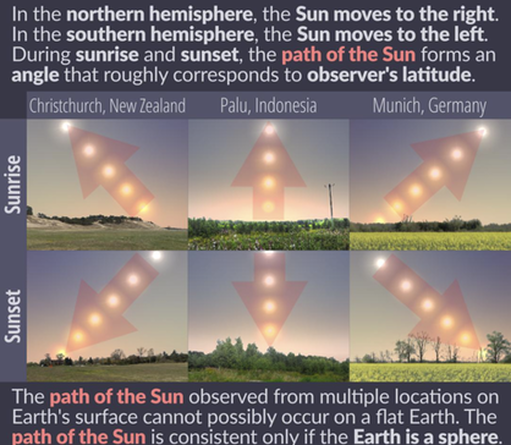
In the Northern hemisphere, the Sun appears to move to the right. In the Southern hemisphere, it appears to move to the left. During sunrise and sunset, the path of the Sun forms an angle that roughly corresponds to the latitude of the observer. This phenomenon occurs because observers on the different locations on Earth’s surface is not standing on the same plane.
The path of the Sun observed from many different locations on Earth’s surface is evidence of spherical Earth. This observation cannot possibly occur on a flat Earth.
The path of the Sun observed from many different locations on Earth’s surface is evidence of spherical Earth. This observation cannot possibly occur on a flat Earth.
If the Earth were flat, then the Sun has to be visible above the horizon all the time, from the entire Earth. This does not occur, and the simple fact should have been sufficient to rule out any possibility of a flat-Earth.
If the Earth were flat, the Sun would never set. It would be visible all the time, and there would be no night. To “fix” this inconsistency with reality, they invented the ad-hoc hypothesis that the Sun shines like a spotlight. That did not address the fact that sunsets do happen. They ‘plugged’ the inconsistency by inventing another ad-hoc hypothesis that “perspective” and “refraction” (which differ from the real-world perspective and refraction, obviously) causes the appearance of a sunset. And so on. The entire community of flat-Earth can no longer distinguish the facts from the ad-hoc hypotheses they invented to prevent their beloved theory from being falsified.
If the Earth were flat, the Sun would never set. It would be visible all the time, and there would be no night. To “fix” this inconsistency with reality, they invented the ad-hoc hypothesis that the Sun shines like a spotlight. That did not address the fact that sunsets do happen. They ‘plugged’ the inconsistency by inventing another ad-hoc hypothesis that “perspective” and “refraction” (which differ from the real-world perspective and refraction, obviously) causes the appearance of a sunset. And so on. The entire community of flat-Earth can no longer distinguish the facts from the ad-hoc hypotheses they invented to prevent their beloved theory from being falsified.
At the extreme case where the observer is on the ‘edge’ of the Earth, the Sun would still be 8.7° above the horizon at its farthest point, or equivalent to the position of the Sun about half an hour before sunset (on the real-world Earth).
No amount of refraction and perspective can make the Sun appear below the horizon. And no ‘lampshade’ can make the Sun completely disappear during the night.
No amount of refraction and perspective can make the Sun appear below the horizon. And no ‘lampshade’ can make the Sun completely disappear during the night.
- The visible limit of the human eye is about 1 arcminute or 0.02°, this is considered the vanishing point. In order for the sun and the horizon to be within 0.02° of each other, the sun must be 1,000,000 miles away and only 350 miles high.
- What if we left the sun at 3,000 miles elevation and forced the sun to be in the vanishing point of the flat earth horizon? How far away would it need to be? The sun would need to be 8,500,000 miles away to appear on the horizon.
Perspective to go away it has to be right under or right above.
If you see two parallel lines from below or above they will appear parallel.
Looked at head on they will not.
How it moves , why it changes direction, how it stays up there in the first.
Times closer and farther.
The visual size much change.
Sun changes size as it moves through sky
If you see two parallel lines from below or above they will appear parallel.
Looked at head on they will not.
How it moves , why it changes direction, how it stays up there in the first.
Times closer and farther.
The visual size much change.
Sun changes size as it moves through sky
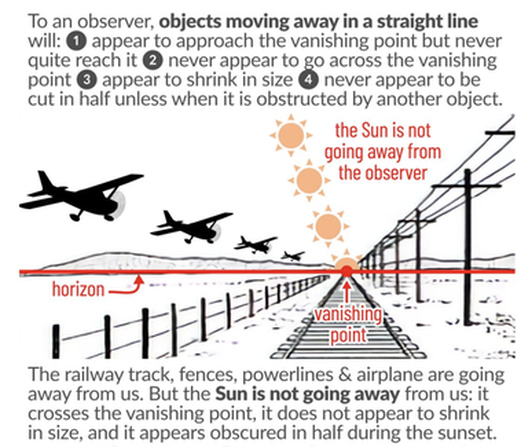
Throughout the entire day, the angular size of the sun never changes.
This is impossible on a flat earth that has a small and local sun which it would grow (moving toward) and shrink (moving away) in size as it goes around the flat earth
Thanks to many observations using solar filter, we know that the angular size of the sun stays the same and it is also the same for the moon.
Do the math, calculate the angles, plot it out. Use 3D apps, whatever. Do it for the three examples above. Then, use suncalc.org to get the observed sunrise, local solar noon and sunset locations for the three examples above and include these observations into the same dome model. Then use the same dome model to model the angular size of the sun to match the observed size of the sun, about 30 arcminutes, all day every day
This is impossible on a flat earth that has a small and local sun which it would grow (moving toward) and shrink (moving away) in size as it goes around the flat earth
Thanks to many observations using solar filter, we know that the angular size of the sun stays the same and it is also the same for the moon.
Do the math, calculate the angles, plot it out. Use 3D apps, whatever. Do it for the three examples above. Then, use suncalc.org to get the observed sunrise, local solar noon and sunset locations for the three examples above and include these observations into the same dome model. Then use the same dome model to model the angular size of the sun to match the observed size of the sun, about 30 arcminutes, all day every day
And the movement of the Sun and Moon shows a perfectly even motion -- if it were getting more distant we would see smaller and smaller angular motions for the same amount of time. 15 degrees per hour every day, all year!
These poles are equally spaced but notice how they stack up due to perspective, we should see the same effect in the Moon and Sun but we don't.
What we see is equal angles swept out over equal time.
These poles are equally spaced but notice how they stack up due to perspective, we should see the same effect in the Moon and Sun but we don't.
What we see is equal angles swept out over equal time.
Points we agree on
1) Circle 360 degrees
2) 360 / 24 = 15 degree sections
3) One solar day is 24 hours
4) Sun changes path on the plane of the ecliptic about
15 degrees each hour, no matter where you are on earth
Timeanddate.com you can see 15degree per hour anywhere on earth
Because the sun is 93 million miles away, every location is essentially the same distance from the sun. Every place on earth is essentially the center of rotation.
Atmospheric lensing
The suns location changes by 15 degrees every hour hour, every day, everywhere on the planet regardless of temperature or moisture content. No amount of lensing or perspective could make that happen.
But you know what does make that happen?
A rotating earth and a distant sun!
1) Circle 360 degrees
2) 360 / 24 = 15 degree sections
3) One solar day is 24 hours
4) Sun changes path on the plane of the ecliptic about
15 degrees each hour, no matter where you are on earth
Timeanddate.com you can see 15degree per hour anywhere on earth
Because the sun is 93 million miles away, every location is essentially the same distance from the sun. Every place on earth is essentially the center of rotation.
Atmospheric lensing
The suns location changes by 15 degrees every hour hour, every day, everywhere on the planet regardless of temperature or moisture content. No amount of lensing or perspective could make that happen.
But you know what does make that happen?
A rotating earth and a distant sun!
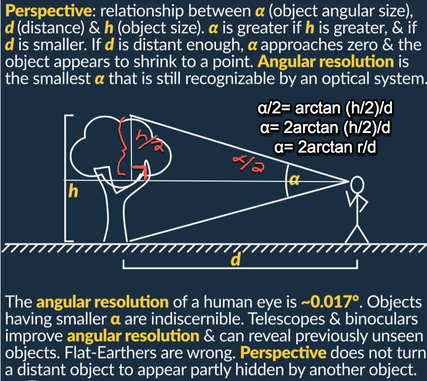
Perspective Does not Work!
This makes sense if the sun is the size asserted at the distance asserted, we would not expect to see any shift in angular size as predicted by the law of perspective.
The law of perspective being α= 2*arctan(g/2R)
α being the angular size of the object,
g being the actual size of the object
And R being the distance to the object
To an observer, the law of perspective will cause objects moving away in a straight line to:
This might look fancy but this is just based on a simple slope calculation, or RISE (1/2 the total size) over RUN (the distance), which gives us our half-angle, which we double to get the total angular size. This is one-in-the-same as the law of Perspective.
One caution is that you need to find the 'size' that is perpendicular to your line of vision, it's not always the simple height of the object. You'll see in one case I compensate for the small 'tilt' of the object, but we show that it's insignificant.
Perspective Calculator
https://rechneronline.de/sehwinkel/angular-diameter.php
This makes sense if the sun is the size asserted at the distance asserted, we would not expect to see any shift in angular size as predicted by the law of perspective.
The law of perspective being α= 2*arctan(g/2R)
α being the angular size of the object,
g being the actual size of the object
And R being the distance to the object
To an observer, the law of perspective will cause objects moving away in a straight line to:
- appear to approach the vanishing point but never quite reach it,
- never appear to go across the vanishing point,
- appear to shrink in size,
- never appear to be cut in half unless when it is obstructed by another object.
This might look fancy but this is just based on a simple slope calculation, or RISE (1/2 the total size) over RUN (the distance), which gives us our half-angle, which we double to get the total angular size. This is one-in-the-same as the law of Perspective.
One caution is that you need to find the 'size' that is perpendicular to your line of vision, it's not always the simple height of the object. You'll see in one case I compensate for the small 'tilt' of the object, but we show that it's insignificant.
Perspective Calculator
https://rechneronline.de/sehwinkel/angular-diameter.php
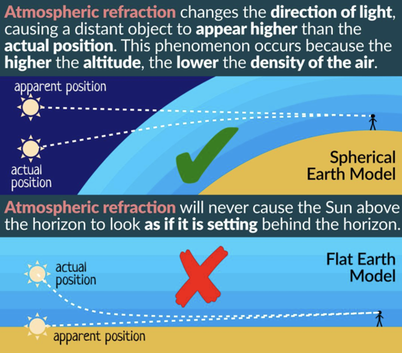
Refraction does not work!
Atmospheric refraction occurs because the higher the altitude, the lower the density of the air is. Because of the varying density, a light parallel to the ground will curve along the curvature of the Earth. This phenomenon cannot be explained in the flat-Earth model where they need refraction to bend to the other direction. In turn, they would need the density profile of the atmosphere to be reversed: the higher the altitude, the higher the density. This obviously is not in line with reality.
Another problem with the flat-Earth model is the amount of refraction. Atmospheric refraction only causes a shift of about 0.57°. This means the Sun is still visible even though physically it is already 0.57° below the horizon. The flat-Earth model would require a much more significant amount of refraction, and to the other direction.
That is, this refraction effect would produce an apparent image of the Sun that would be above the real one, which would give us the sensation that the Sun is higher (S ') than it really is (S) , and not the other way around:
Atmospheric refraction occurs because the higher the altitude, the lower the density of the air is. Because of the varying density, a light parallel to the ground will curve along the curvature of the Earth. This phenomenon cannot be explained in the flat-Earth model where they need refraction to bend to the other direction. In turn, they would need the density profile of the atmosphere to be reversed: the higher the altitude, the higher the density. This obviously is not in line with reality.
Another problem with the flat-Earth model is the amount of refraction. Atmospheric refraction only causes a shift of about 0.57°. This means the Sun is still visible even though physically it is already 0.57° below the horizon. The flat-Earth model would require a much more significant amount of refraction, and to the other direction.
That is, this refraction effect would produce an apparent image of the Sun that would be above the real one, which would give us the sensation that the Sun is higher (S ') than it really is (S) , and not the other way around:
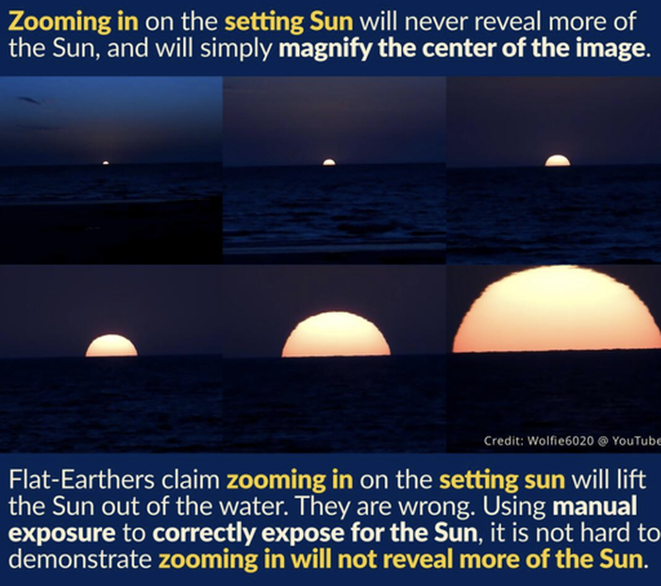
NO AMOUNT OF ZOOMING BRINGS THE SUN BACK!
Even if atmospheric refraction behaves like they want it to, they still need to explain why a sunset has a clearly defined boundary between the obstructed part and the visible part of the Sun. And at the same time, the ground is practically unaffected by refraction at all. No, it is not possible the Sun above the horizon to appear to set behind the horizon.
All this time, both refraction and perspective are abused by flat-Earthers as technobabble. Two sophisticated scientific-sounding terms along with the related “demonstration” are being used to dazzle the unsuspecting crowd. In reality, both cannot explain the everyday phenomenon of sunrise and sunset in the flat-Earth model. Not even close.
Even if atmospheric refraction behaves like they want it to, they still need to explain why a sunset has a clearly defined boundary between the obstructed part and the visible part of the Sun. And at the same time, the ground is practically unaffected by refraction at all. No, it is not possible the Sun above the horizon to appear to set behind the horizon.
All this time, both refraction and perspective are abused by flat-Earthers as technobabble. Two sophisticated scientific-sounding terms along with the related “demonstration” are being used to dazzle the unsuspecting crowd. In reality, both cannot explain the everyday phenomenon of sunrise and sunset in the flat-Earth model. Not even close.
Crepuscular Ray Nonsense
Flat Earthers need to bring the verifiable evidence. I'm not doing more of these, "Do The Research" yourself. Show me an image where the sun is actually over the spot you claim.
And then there are the obvious failures of trying to take 2D angles from 3D space, where is the Sun now?
Flat Earthers need to bring the verifiable evidence. I'm not doing more of these, "Do The Research" yourself. Show me an image where the sun is actually over the spot you claim.
And then there are the obvious failures of trying to take 2D angles from 3D space, where is the Sun now?
Crepuscular Rays are PERSPECTIVE
just like this short video clip shows!
The sun's rays come in almost perfectly PARALLEL because it is 93 million miles away! You can see the parallel rays clearly here with a little elevation! At ground level our eyes create a perspective effect of crepuscular rays giving rise to the illusion the sun 'appears' closer than it is. Train tracks also have this perspective effect, and when you go up in elevation, you see the train tracks straighten out too!
There is NO local sun!
just like this short video clip shows!
The sun's rays come in almost perfectly PARALLEL because it is 93 million miles away! You can see the parallel rays clearly here with a little elevation! At ground level our eyes create a perspective effect of crepuscular rays giving rise to the illusion the sun 'appears' closer than it is. Train tracks also have this perspective effect, and when you go up in elevation, you see the train tracks straighten out too!
There is NO local sun!
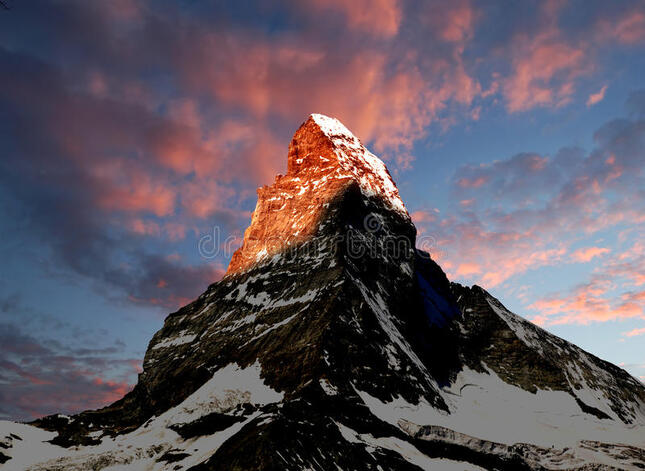
Sunsets light the top of a mountain downward.
Another Reason Sunrises and Sunsets debunk the flat earth is Because you can watch the shadow of the horizon move up a mountain at sunset.
Another Reason Sunrises and Sunsets debunk the flat earth is Because you can watch the shadow of the horizon move up a mountain at sunset.
https://flatearthinsanity.blogspot.com/2016/07/simple-proof-for-convexity-of-earth.html
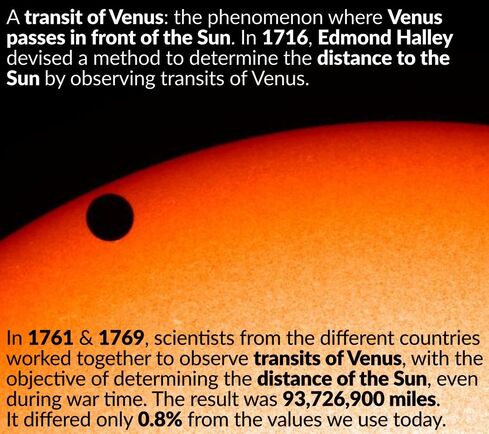
Their result was 93,726,900 miles. This is only a difference of about 0.8% from the radar-based value used today
Some radio telescopes have been outfitted to transmit rather than receive, requiring using a different radio telescope to receive the reflected signal. Other radio telescopes have been outfitted to transmit as well as receive in a pulsed manner. These can be used for radar astronomy without the help of a separate transmitter.
Some radio telescopes have been outfitted to transmit rather than receive, requiring using a different radio telescope to receive the reflected signal. Other radio telescopes have been outfitted to transmit as well as receive in a pulsed manner. These can be used for radar astronomy without the help of a separate transmitter.
Distance to the Sun
1) Radar
1) Radar
2) Venus Transit
We can easily follow Venus find when it is the furthers distance from the sun.
Since 1961, the distance to Venus can be determined directly, by radar measurements, where a series of radio waves is transmitted from Earth and is received after it bounces off Venus and comes back to Earth. By measuring the time taken for the radar echo to come back, the distance can be calculated, since radio waves travel at the speed of light. Once this Earth-Venus distance is known, the distance between Earth and the Sun can be calculated.
Not the size of Venus....
Angular Size is easy once you know the distance
Angular Size of the sun is .5334 degrees = .004655 radians/2 = .
Actually Angular Diameter is .5334 degrees / 2 = .2667 degrees
Tan (.2667) * 93,637,000 = 871,767 Miles close to 865,000
We can easily follow Venus find when it is the furthers distance from the sun.
Since 1961, the distance to Venus can be determined directly, by radar measurements, where a series of radio waves is transmitted from Earth and is received after it bounces off Venus and comes back to Earth. By measuring the time taken for the radar echo to come back, the distance can be calculated, since radio waves travel at the speed of light. Once this Earth-Venus distance is known, the distance between Earth and the Sun can be calculated.
Not the size of Venus....
Angular Size is easy once you know the distance
Angular Size of the sun is .5334 degrees = .004655 radians/2 = .
Actually Angular Diameter is .5334 degrees / 2 = .2667 degrees
Tan (.2667) * 93,637,000 = 871,767 Miles close to 865,000
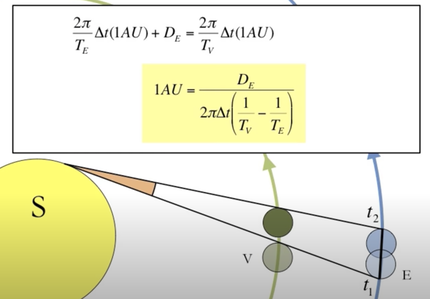
Distance to the Sun during transit of Venus.
2 observers - calculate parallax
Heres how I did it.
Shape size or mass... Keplers.
Same size as earth.
Learning and getting better size.
To Calculate the Distance to the sun during a Venus Transit,
We need only:
1) the orbit Time of the Earth (we know is 365.25 days)
2) the Orbit of Venus (easy to calculate)
3) Δ t
4) Diameter of the Earth (we know from many ways like Al-Biruni below
NOTE: This estimate approximates that the size of Venus is about the same as earth, or how far Venus is away or anything else but above during the Transit of Venus.
2 observers - calculate parallax
Heres how I did it.
Shape size or mass... Keplers.
Same size as earth.
Learning and getting better size.
To Calculate the Distance to the sun during a Venus Transit,
We need only:
1) the orbit Time of the Earth (we know is 365.25 days)
2) the Orbit of Venus (easy to calculate)
3) Δ t
4) Diameter of the Earth (we know from many ways like Al-Biruni below
NOTE: This estimate approximates that the size of Venus is about the same as earth, or how far Venus is away or anything else but above during the Transit of Venus.
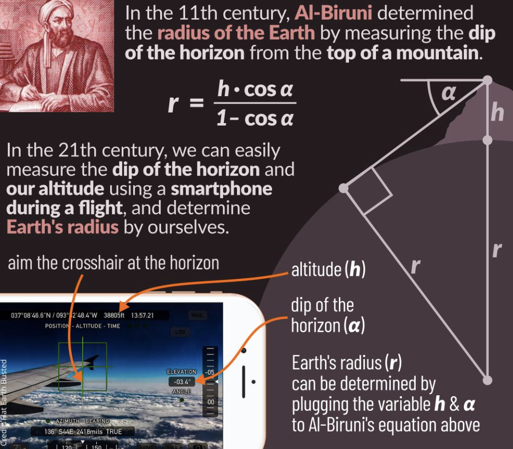
Radius of Earth can be calculated fairly accurately with Al-Biruni's method , which
is now easy these days with modern technology.
The fact you can get almost the same exact answer in different locations and different
heights is AMAZING confirmation the number is accurate. But there are other ways to calculate
the diameter like Eratosthenes method and others.
is now easy these days with modern technology.
The fact you can get almost the same exact answer in different locations and different
heights is AMAZING confirmation the number is accurate. But there are other ways to calculate
the diameter like Eratosthenes method and others.
This image of Mt. Rainier taken by Shannon Winslow (author of historical fiction in the tradition of Jane Austen) features a shadow that is cast upwards on the clouds with a clear gap between the mountain top and the shadow.
This places the Sun over South America, near Latitude: 23° 09' South, Longitude: 70° 58' West as shown by Date and Time -- along a heading of about 134 degrees.
And since we're right in line with the shadow this puts us Southeast of Tacoma, possibly near the Orting/Carbonado area. But there are no bodies of water Southeast of Mt Rainier that would explain the upward casted shadow.
Much less the EXTREME grasping at straws this represents from the Flat Earth crowd given where the Sun is overhead...
But it makes perfect sense on a Globe.
Indeed, if we pull back as far as we can in Google Earth (which isn't nearly as distant as the Sun unfortunately) we can see this puts that area of Washington right on the edge where it would need to be when we're over the marked spot on the Globe. Funny how that works.
And since we're right in line with the shadow this puts us Southeast of Tacoma, possibly near the Orting/Carbonado area. But there are no bodies of water Southeast of Mt Rainier that would explain the upward casted shadow.
Much less the EXTREME grasping at straws this represents from the Flat Earth crowd given where the Sun is overhead...
But it makes perfect sense on a Globe.
Indeed, if we pull back as far as we can in Google Earth (which isn't nearly as distant as the Sun unfortunately) we can see this puts that area of Washington right on the edge where it would need to be when we're over the marked spot on the Globe. Funny how that works.
Flat Earthers Cannot Hotspot!
Still Not Convinced? Watch Sly Sparkane Break it Down and Demolish this silly flat earth claim!
Below Left Summary, Below Right full video.
Below Left Summary, Below Right full video.
Sun glitter
Sun glitter is a bright, sparkling light formed when sunlight reflects from water waves. A rippled by a locally smooth surface such as water with waves will reflect the sun at different angles at each point on the surface of the waves. As a result, a viewer in the right position will see many small images of the sun, formed by portions of waves oriented correctly to reflect the sun’s light to the viewer. Flat-Earthers use the long shape of the sun’s reflection on a water surface to “prove” Earth is flat. In reality, the shape of the reflection is the result of the rippling water surface. It can easily occur on a curved surface and does not prove a specific shape of Earth. Flat-Earthers like to devise a “simulation” to show that a curved surface does not form the shape of reflection similar to what we observe during sunset and incorrectly concluded Earth is not a sphere.
Their mistake was placing the observer too far from the surface, making far too large of a curvature to represent spherical Earth, and using an even, smooth surface. The reflection of rippling water can be easily simulated using a sheet of wrinkled aluminum foil. By placing it over a curved surface, we can see it producing the same result.
Sun glitter is a bright, sparkling light formed when sunlight reflects from water waves. A rippled by a locally smooth surface such as water with waves will reflect the sun at different angles at each point on the surface of the waves. As a result, a viewer in the right position will see many small images of the sun, formed by portions of waves oriented correctly to reflect the sun’s light to the viewer. Flat-Earthers use the long shape of the sun’s reflection on a water surface to “prove” Earth is flat. In reality, the shape of the reflection is the result of the rippling water surface. It can easily occur on a curved surface and does not prove a specific shape of Earth. Flat-Earthers like to devise a “simulation” to show that a curved surface does not form the shape of reflection similar to what we observe during sunset and incorrectly concluded Earth is not a sphere.
Their mistake was placing the observer too far from the surface, making far too large of a curvature to represent spherical Earth, and using an even, smooth surface. The reflection of rippling water can be easily simulated using a sheet of wrinkled aluminum foil. By placing it over a curved surface, we can see it producing the same result.

(left) This one took on a sharply convexly curved overpass. Clear columning is observed along the convexly curved surface.
(right) Here we observe it with sunlight all the way over the very clearly convexly curved wave!
(right) Here we observe it with sunlight all the way over the very clearly convexly curved wave!

And here is a diagram showing why.

And we don't see the full column when the water isn't rippled enough.

